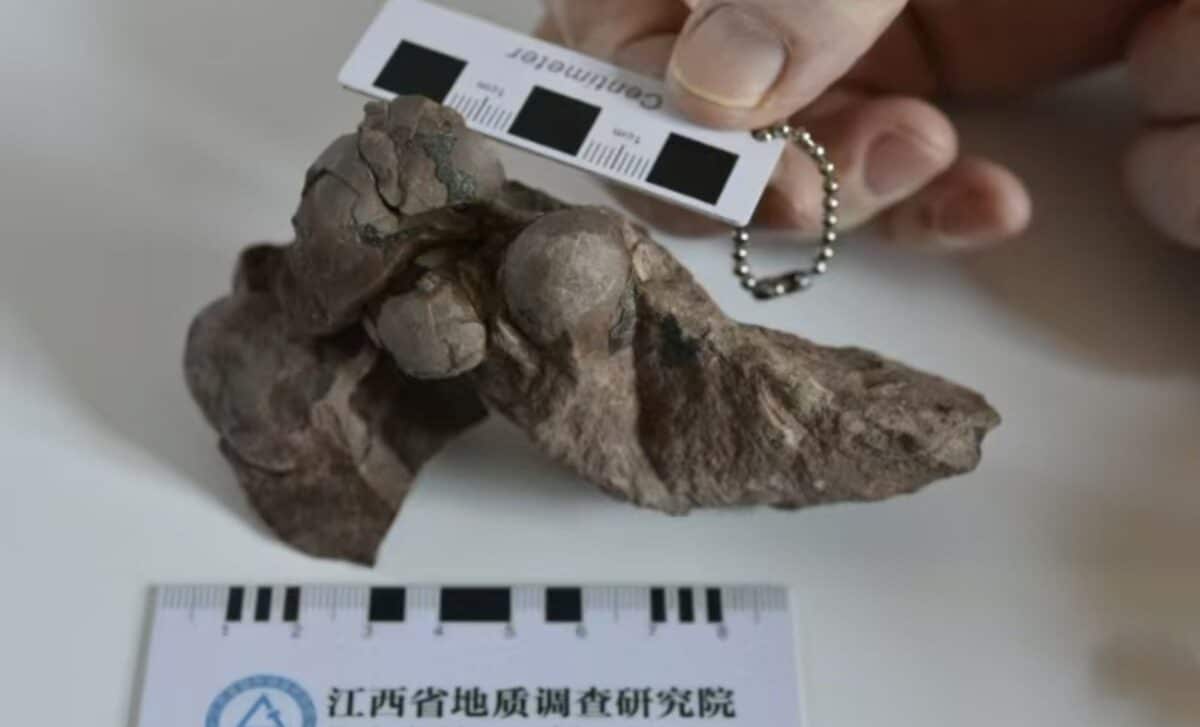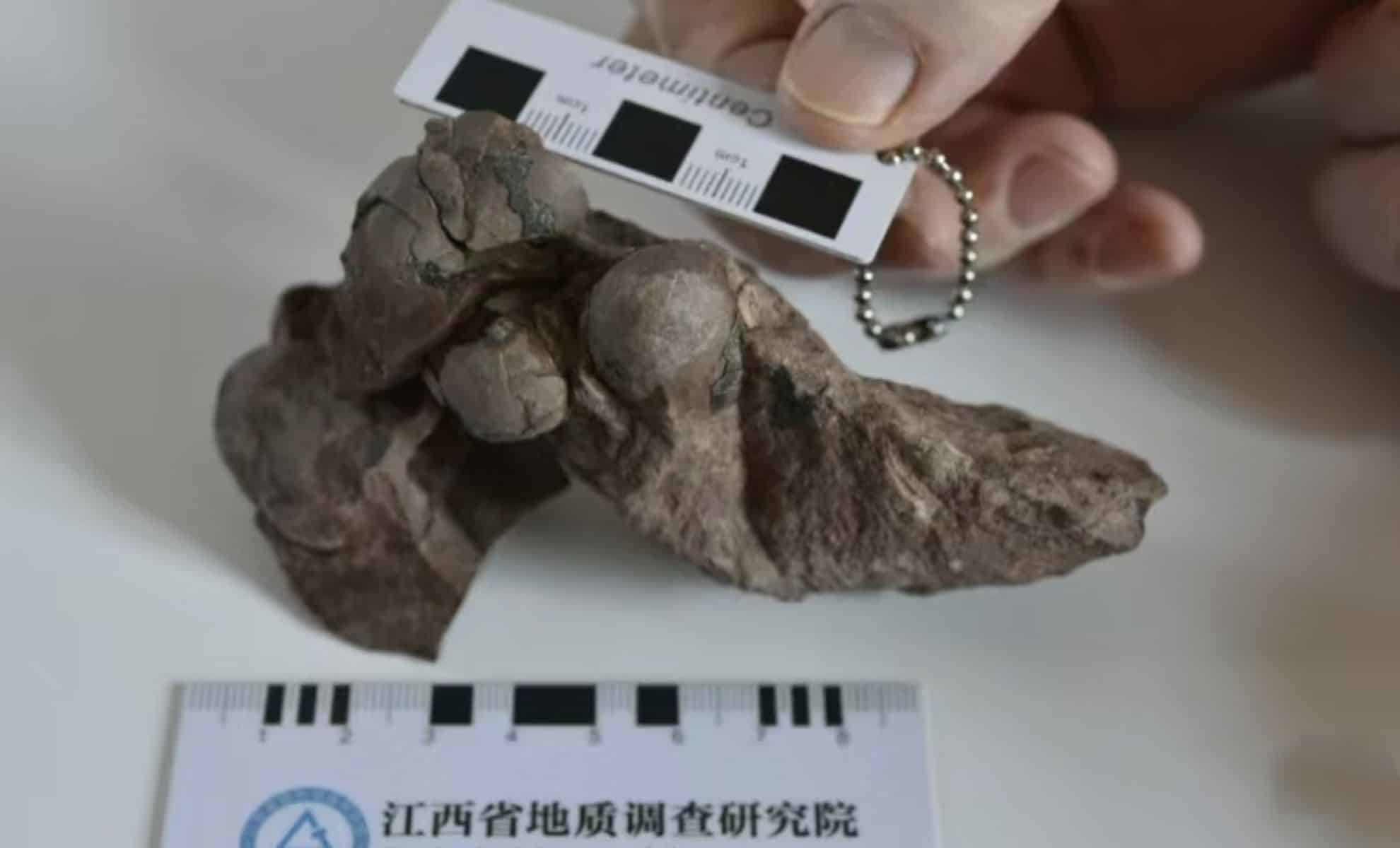In a groundbreaking discovery, researchers in Ganzhou, Jiangxi province, have unearthed the smallest complete dinosaur egg fossil ever found, measuring just 29 millimeters in length. The eggs were discovered in a well-preserved nest dating back over 80 million years to the Late Cretaceous period. This discovery adds new insights into the evolution and reproductive methods of non-avian theropods, marking a significant advance in the study of Late Cretaceous dinosaurs.
World’s Smallest Dinosaur Egg Unearthed in China, Rewriting the Story of Ancient Life

A remarkable discovery in Ganzhou, Jiangxi province, China, has captured the attention of paleontologists around the world.
Researchers have uncovered the smallest dinosaur egg fossil ever found, with a length of only 29 millimeters. The fossilized egg, discovered in a well-preserved nest alongside five other nearly intact eggs, dates back to the Late Cretaceous period, around 80 million years ago. This discovery has been hailed as a major breakthrough in understanding the evolution and reproductive processes of theropod dinosaurs from that era.
Smallest Dinosaur Egg on Record
The eggs were discovered at a construction site in Meilin town, Ganzhou, during an excavation in 2021. Ganzhou is renowned as one of the richest areas for dinosaur fossil discoveries in China, and this find adds to the growing collection of significant paleontological discoveries in the region. The eggs, fossilized together as a cluster, were confirmed to be dinosaur eggs after three years of meticulous study. Collaborating with the China University of Geosciences (Wuhan) and the Institute of Vertebrate Paleontology and Paleoanthropology of the Chinese Academy of Sciences, the research team published their findings in Historical Biology in October 2024.
The smallest of these fossilized eggs, measuring just 29 millimeters, is the most complete example. This new discovery dethrones the previous smallest known dinosaur egg, which measured 45.5 mm in length. The exceptional preservation of these eggs has allowed researchers to gain fresh insights into theropod dinosaurs' reproductive methods during the Late Cretaceous period.
![This Undated File Photo Shows A New Type Of Dinosaur Egg Fossils Discovered In The City Of Ganzhou, East China's Jiangxi Province. [photoxinhua]](png/this-undated-file-photo-shows-a-new-type-of-dinosaur-egg-fossils-discovered-in-the-city-of-ganzhou-east-chinas-jiangxi-province.-photoxinhua-285x380.png)
Significance of the Discovery
According to the research team led by Lou Fasheng, the fossils belong to an unknown dinosaur species. They have been classified into a new ootaxon named Minioolithus ganzhouensis, specifically created to categorize these diminutive eggs. The eggs are believed to be from a non-avian theropod, a group of bipedal carnivorous dinosaurs that are the ancestors of modern birds.
The discovery provides important data about the reproductive diversity of theropod dinosaurs, with researchers suggesting that these tiny eggs represent an evolutionary adaptation. As Zhao Ruinan reported in China Daily, this discovery broadens the understanding of dinosaur reproduction and offers fresh perspectives on the diversity of dinosaur eggs in the Late Cretaceous.
In addition to the analysis of the eggs, researchers hope to gain further information about the nesting behaviors of these ancient creatures. Future excavations and analyses at the site are expected to shed more light on how dinosaurs constructed their nests and the environmental factors that influenced their reproductive strategies.
Ongoing Research and Future Prospects
The research team plans to conduct further studies to identify the specific dinosaur species that laid the eggs. Using nondestructive imaging techniques, such as electron backscatter diffraction, the team has managed to study the eggs and their shells without damaging them, ensuring their preservation for future research. The fossilized eggs will also help researchers explore the developmental processes of dinosaur embryos inside the eggs, offering valuable clues about their growth before hatching.
This discovery adds to Ganzhou’s already impressive paleontological history. The region, particularly well-known for dinosaur egg finds, continues to be a hub for understanding Cretaceous ecosystems. As more fossils are uncovered and analyzed, researchers are optimistic that Ganzhou will yield even more discoveries that deepen the understanding of dinosaur life in ancient ecosystems.



